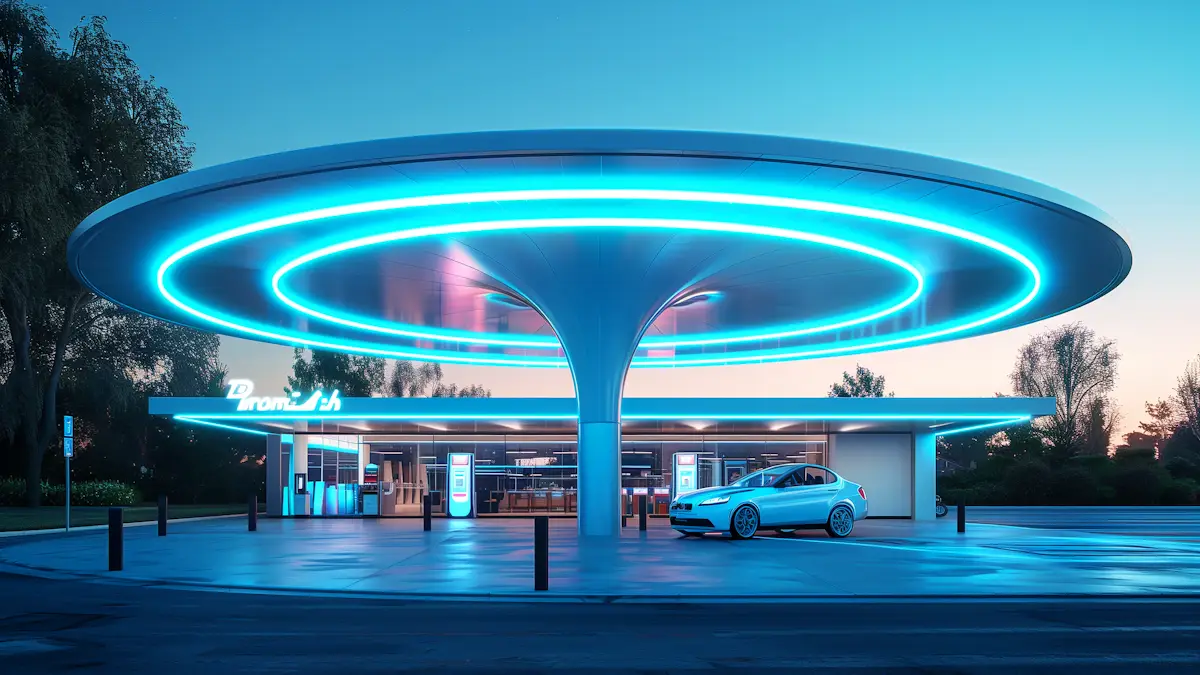Have you ever wondered why electricity might cost different amounts at different times of the day? Kerala has just introduced a new system that changes how much you pay to charge electric vehicles depending on when you plug them in.
According to Trak, the Kerala State Electricity Regulatory Commission has implemented a new Time of Day (ToD) billing system that completely changes how electric vehicle (EV) charging stations operate across the state.
Understanding the New Two-Zone Charging System
The new system divides the day into two simple periods instead of the previous three-zone structure that was more complicated for users to understand and follow. From 9 am to 4 pm is now called the “solar period” when sunshine is strongest and solar energy is most available.
During this time, you get a 30% discount on electricity for charging your electric vehicle. The rest of the day—from 4 pm to 9 am—is the “non-solar period” when you pay 30% extra.
This approach replaces the old system and aims to encourage people to charge their vehicles during daylight hours when Kerala’s power grid can better handle the demand. The Kerala State Electricity Board (KSEB) has already put these new rates into effect at their charging stations across the state.
How Much Will You Actually Pay Now?
| Time Period | Price Change | Real-World Example |
|---|---|---|
| Solar Period (9 am – 4 pm) | 30% discount | A standard ₹100 charge now costs only ₹70, saving you ₹30 each time you charge during daylight |
| Non-Solar Period (4 pm – 9 am) | 30% surcharge | That same ₹100 charge now costs ₹130, making nighttime charging significantly more expensive |
The actual rates vary between providers. The New Indian Express reports that KSEB now charges ₹5 per unit during solar hours and ₹9.30 during non-solar hours, compared to their previous flat rate of ₹5.50. Private companies like EVOK charge higher rates—₹13.80 during solar hours and ₹17 during non-solar hours.
Making Sure Customers Get the Discount
An important part of this new policy is that charging station operators must pass these discounts directly to the people who own electric vehicles, not keep the savings for themselves. However, Onmanorama reports that the Regulatory Commission doesn’t actually have the power to enforce this pass-through requirement, which creates potential issues.
Fortunately, KSEB has confirmed they are already passing these savings to customers at their public charging stations, setting a good example for other operators. This means when you charge your vehicle during daytime at a KSEB station, you actually pay less than before.
Why Kerala Made This Change
- Promoting Solar Energy: Kerala wants more people to use electricity when solar power is being generated, reducing waste of renewable energy
- Reducing Grid Pressure: Evening hours (4 pm to 9 pm) typically see the highest electricity demand as people return home from work and turn on appliances
- Supporting EV Adoption: By making daytime charging cheaper, the government hopes more people will consider buying electric vehicles
The system creates challenges for some operators, especially those with on-grid captive solar power plants. These stations can only get credit for 53% of the solar power they feed into the grid during daytime if they consume it at night. This partial credit system encourages them to use their solar power directly during daylight hours.
Looking at the Bigger Picture
This approach isn’t unique to Kerala. Many regions worldwide use similar time-based pricing, though with different approaches. In the US, utilities offer financial incentives to shift charging to off-peak times. Nordic countries use dynamic pricing tied to hourly market rates, while Ireland offers significant savings for overnight charging.
Kerala officials expect this policy will successfully shift more EV charging to daytime hours, reducing evening demand when the grid is already heavily loaded. For EV owners, understanding these new time periods and planning charging accordingly can lead to significant savings over time.











